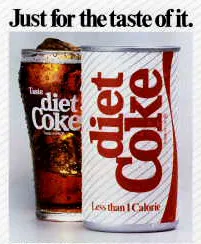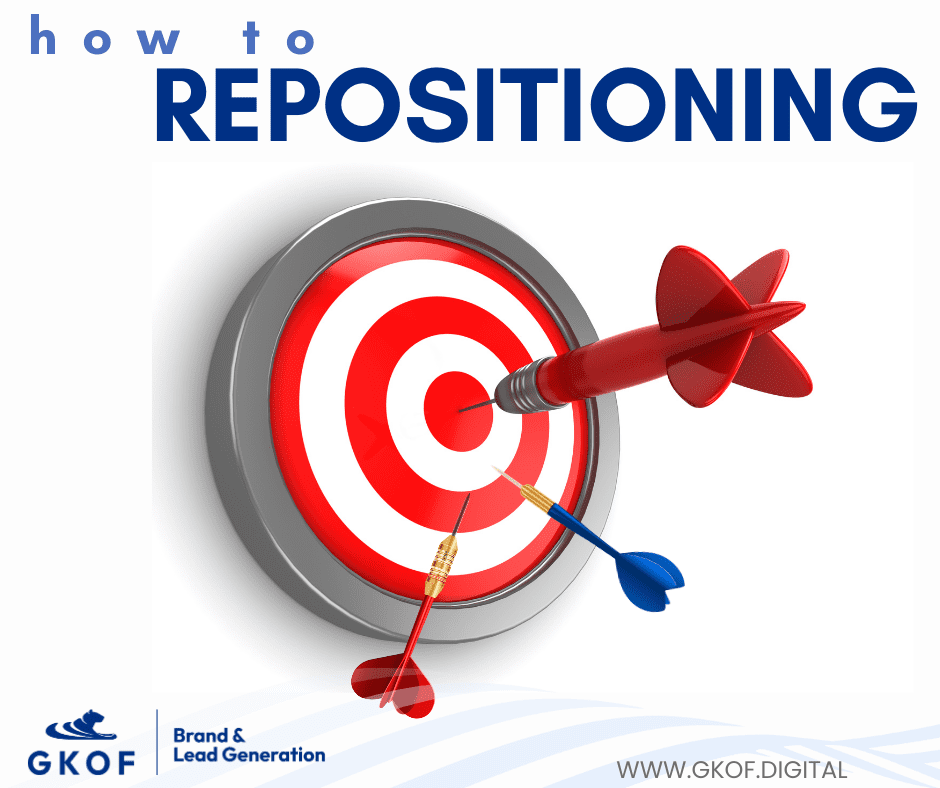Most Marketers know the story of the formation of the legendary Coca-Cola brand: starting from a recipe for mixing water to help relieve headaches and fatigue in the form of syrup mixed with cold water from a local pharmacist in Atlanta. – America in 1886, through many turning points and difficulties, achieved great success, especially the story “only 25 bottles sold in the first year” became the driving force for global startups.
We want to tell you another legendary story called “Diet Coke”, the second pride of this world’s leading beverage company. With the desire to bring more inspirations to business owners and marketers in expanding brands and diversifying products to strengthen company’s equity
The Extraordinary Story of How Diet Coke Came to Be. We needed a Big Idea
In the summer of 1980, a Coca-Cola planning manager named Jack Carew was tapped to lead a project that had been percolating within the company for two decades but never came to fruition – to introduce a “diet” version of Coca-Cola.
Until that point, extending the Coca-Cola Trademark to another brand had been a no-no. But times had changed.
“We needed a big idea to come out of one of the toughest decades we’d ever seen,” Carew explains.
Diet Coke was pegged as a top priority. The project was strictly top secret; only a handful of senior executives knew about it, and team members had to agree to the assignment before getting the details.
“It was an entrepreneurial, cloak-and-dagger operation in the purest sense,” said Jerry Bell, who worked with Carew in the Planning Department. “I remember getting this weird phone call from Jack… and I couldn’t say no.”
Within a few weeks, they presented a draft study to Coca-Cola USA President Brian Dyson, followed by Roberto Goizueta, who had been elected Chairman and CEO just months earlier, President Don Keough and Chief Marketing Officer Ike Herbert.
No Risk, No Reward
Goizueta green-lighted the Diet Coke project, which shifted quickly from planning to implementation. “This was a difficult decision because there were two big risks,” Carew said. “TaB was the moneymaker at the time, so if Diet Coke turned out to be a disappointment, the company would seriously complicate its future. Second, if senior leadership said no to Diet Coke, then we likely would have lost cola position.”
Despite concern that Diet Coke would cannibalize TaB – which was the No. 1 diet soft drink brand in the U.S. at the time – and erode the long-term health of the Coca-Cola Trademark, the team’s research concluded just the opposite.
Colas accounted for 60 percent of all soft drink sales in the U.S. back then, but diets were growing three times faster than the rest of the category. Diet Coke was seen as the right product for the right time.
“We said Diet Coke would be more accretive to Coca-Cola brand value because we would source volume from the competition versus the Coke franchise,” said Pat Garner, who joined the Diet Coke team with 10 years of bottler and field marketing experience. “And we were right.”
What’s in a Name?
The team debated over whether to adopt the “diet” prefix – the label Nielsen had given to the relatively new category because the term was used in the names of two of its top three brands. “Sugar Free” was one alternative, but many saw it as a slur on Coca-Cola’s main ingredient. And “Light” was already taken by a competitor brand.
Diet Coke was the most straightforward articulation of the promise of the brand. “It just seemed like the logical answer,” said John Farrell, who joined the team from Corporate Finance. “The equity of the Coca-Cola name promised the delivery of taste, and ‘diet’ told you it didn’t have sugar or calories.”
For many years, the brand name was written and marketed as diet Coke – with a lowercase “d” – to reinforce the positioning of the product. Coke’s trademark lawyers wouldn’t allow the uppercase “D.”
Their reasoning: Diet with an uppercase “D” was a noun, and the use of a noun changed the name of the trademark. Use of the lowercase “d” was an adjective and, therefore, did not alter the legal basis of the trademark.
A Plan that Pays
As the positioning began to come together, Farrell built a financial model to demonstrate the link between the brand’s marketing activities and bottler revenue. The plan motivated the system and turned bottlers into full-fledged Diet Coke enthusiasts.
“John’s model made us highly credible,” Carew said. “We’d present our marketing plan to a bottler, and then he’d explain how it would pay out.”
As Farrell explains it, “The economics of Diet Coke were so unbelievably simple because it didn’t have any sugar. When you remove the second-highest cost item after aluminum cans, you can make the numbers trend pretty well. Diet Coke gave us dramatically accelerated growth in a growing category with a very high-margin structure.”
Just For the Taste of It’
The financial model gave Coca-Cola USA the confidence to invest in marketing the brand. Steve Norcia, a former executive at the McCann Erickson ad agency, and his team at SSC&B – a division of Interpublic – crafted the ad campaign that would introduce and sustain Diet Coke in its first year.
“We positioned it as a great-tasting soft drink that happens to have one calorie, rather than as a diet drink that tastes great,” Norcia explains. “We thought this would broaden its appeal as the first diet soft drink to emphasize sheer pleasure and great taste – not just part of a diet regimen.”
According to Farrell, the resulting “Just for the Taste of It” tagline “communicated everything anyone needed to know about the physical product.” This vision drove Team Diet Coke’s decision-making on everything from packaging graphics, to in-store merchandising, to billboards. “It became our mantra,” Garner said

The Face of the Brand
Diet Coke existed only on paper for months, but mock-ups of the initial packaging graphics gave the brand a visual identity. The team built a makeshift grocery aisle inside an abandoned syrup plant next to company headquarters to see how the designs would look on the shelf alongside other brands. Paper graphics were taped to empty cans.
“At that point, it all became very real,” Bell said. The winning design included bold red letters against a white background with diagonal pinstripes revealing the shiny silver aluminum.
Understanding the Diet Consumer
The core Diet Coke demographic was baby boomers who were getting 20 years older and 20 pounds heavier. “We had an in-depth knowledge of our target consumer and the issue of weight in America,” Carew said. “It all added up to a total impression of a better experience in the diet segment than the consumer had been getting.”
SSC&B’s extensive consumer research revealed several key insights that steered the brand’s marketing strategy. “We asked people which celebrities they thought would drink Diet Coke, and they responded with names of very masculine movie stars,” Norcia said. “That gave us the enthusiasm and verification to go after men.”
Hurry Up or Wait?
Behind the scenes, researchers had been working for more than two years to formulate a new low-calorie soft drink worthy of sharing the Coca-Cola name. And while extensive consumer taste tests revealed that Diet Coke was preferred over the competition, both were sweetened with the only approved non-caloric sweetener at the time: saccharin.
This meant that Diet Coke needed to get a leg up by playing up its taste, the strength of the Coca-Cola name and a keen understanding of the social psychology of the target consumer through packaging and advertising.
Diet Coke’s introductory tagline communicated ‘everything anyone needed to know about the product’ and became the team’s mantra.
Coke’s regulatory team predicted that the Food and Drug Administration (FDA) would approve aspartame by 1985. Several executives wanted to ride the wave of the industry by waiting until a standard sweetener was available to launch Diet Coke.
“We knew aspartame was going to happen; it was just a matter of when,” Carew says. “Our counter-argument to those who wanted to wait for was differentiate or die. We had to get out in front, enter the market with a saccharin base and take advantage of the awareness and acceptance of the event. In short, we had to succeed with brand power and bottler system power.”
Six lead markets – New York, Jacksonville (Fla.), San Diego, Minneapolis, Denver and Baltimore – were selected to debut the brand. “By rolling out slowly, we hoped to spark a bit of friendly competition among markets,” Carew explains. “For example, we wanted Los Angeles to keep an eye on what New York was doing. Because they set the standard… and it was high.”
A Premier Event
Coca-Cola held a high-profile press conference in New York City on July 8, 1982. Reporters packed the Hyatt Hotel, where Dyson announced that “the most significant new product introduction in the entire 96-year history of The Coca-Cola Company” would be available in the Big Apple within days.
A week later – before the first case had been delivered – 75 percent of the area population was aware of Diet Coke’s imminent introduction. This awareness, fueled by mounting bottler enthusiasm, gave the brand a big head start.
Diet Coke’s first TV commercial had to define the character of the brand and make a bold statement. Dyson told Mal MacDougall, SSC&B’s creative director, that he expected the advertising equivalent of putting a man on the moon.
Carew arrived at the office one morning, having just heard the news that Princess Diana had given birth to Prince William. After kicking around the idea with the team, he called Norcia and asked him if Diet Coke could be positioned as heir to the throne of Coca-Cola.
“Steve bounced it off Mal, who came to Atlanta a few days later to show us how the ‘heir to the throne’ metaphor could translate to a TV commercial,” Carew said. “After seeing the story boards, Brian said, ‘My socks just fell down.’” He had his moon shot.
The spot was filmed on July 29, 1982, at Radio City Music Hall in New York after a gala event for bottlers and key customers. The ad carried the mystique of the Academy Awards with the brand’s name in lights on the Radio City marquee, footage of the famous Rockettes performing onstage, and the voiceover, “Ladies and gentlemen, welcome to the world premiere of a great new soft drink called Diet Coke.”
“We wanted to make it clear that Diet Coke was a new product no one had ever seen before,” Norcia said. “When the advertising broke, we went to all the major TV stations in New York and brought cases of Diet Coke in for the staff to drink so they could celebrate with us.”
Team Diet Coke – who took in the spectacle from the third balcony – stayed at Radio City until about 4 a.m., when production finally wrapped after 42 takes. “By the end, I think the Rockettes had been on stage for six or eight hours,” Garner remembers.
Making a Mark
Months later, Nielsen reported the first market share for Diet Coke in Denver. Carew jotted down the data and went to the company auditorium where Dyson was holding a meeting with bottlers. “I walked across the stage and handed him the piece of paper,” Carew recalls. “The room turned into a celebration… cheers, whistles, hugs, bravos.”
The news lit a fuse. Who would beat Denver? No one ever did, but a series of once-in-a-lifetime bottler rollouts soon followed with great fanfare
“The success of the launch showed the greatness of the entire Coca-Cola system,” Carew said. “Our bottlers truly understand what it takes to make an indulgent, impulse product launch a success. So much of what Diet Coke did was excite and motivate the bottling system … which goes back to John’s model.”
By the end of 1983, Diet Coke was the No. 1 diet soft drink in the U.S. and the top soft drink brand among women. At the end of 1984, Diet Coke displaced 7UP as the No. 3 soft drink in the U.S. behind Coca-Cola and Pepsi – a position it held until the end of 2010 when it overtook Pepsi. At the end of the ‘80s, Advertising Age named Diet Coke Brand of the Decade.
“Being the number-one diet drink was an automatic slam dunk,” said Garner. “That was just a stepping stone for us. Our aspiration was never short of being one of the top-selling soft drinks in the world.”
Lessons Learned
The success of the brand demonstrated the importance of trusting people to do their jobs and to take risks. “Give them all the latitude they can possibly take,” Carew said. “You also have to be credible. You have to know your stuff, study everything, and have an answer to any question that might come up. And lastly, you have to be so confident that you charge out there and demonstrate to the world that you know what you’re doing.”
Teamwork and an entrepreneurial spirit are important, too, Garner said. “Yes, each of us can do great things as individuals. But we worked as a team, including our agency partners.”
He concluded, “My entrepreneurial seeds were sown in the days of Diet Coke. Every time I speak to these guys, that entrepreneurial spirit comes back. This team will be together forever.”
Source: https://www.coca-colacompany.com/about-us/history/diet-coke-global-premiere-1982









